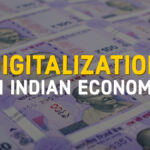The awareness and consciousness vis-à-vis the importance of education in the advancement of a country have significantly developed since the late 1990s. With parents becoming much more conscious about the primary education of their children along with the Indian government optimistically introducing and promoting measures to universalize elementary education, India has come a long way since independence in terms of enrollment rates in primary grades. The Annual Status of Education Report (Rural) of 2019 highlights that, 90 percent of children in the age group of 4-8 years are enrolled in an educational institution.
The rising demand for English medium education and the widespread perception of private education being superior to public education play a key role in facilitating the growing unpopularity of elementary education in government schools.
A recent trend that has been observed in the education scenario of the country is the tremendous growth spurt in elementary private schooling. According to a paper published by Geeta Gandhi Kingdon from a study over the span of four-years from 2010-11 to 2014-15, the number of private schools rose by 71,360 schools. By contrast, the total number of government schools in India, across 20 major states of India, rose by a mere 16,376 government schools. The rising demand for English medium education and the widespread perception of private education being superior to public education play key roles in facilitating the growing unpopularity of elementary education in government schools.
We, at TheRise.co.in, conducted a small survey wherein 93 percent of the respondents in private schools reported that the medium of instruction was primarily English. Further studies have pointed out that student test scores of private schools are considerably better than government schools i.e. the schools in the public sector.
Also Read: Uncovering implications of syllabus reduction at secondary level
Parents want to provide their children with the best education and hence the debate about the quality of education in the private vs. public sector assumes a central role in deciding a school for their children. However, this discussion assumes a little more meaning if the question about teacher quality and effectiveness and the challenges associated with it in both the sectors are also taken into account.
There is a general perception that the primary teachers in private schools are more accountable than primary teachers of government schools. The Probe Report (1999) also validated this perception by pointing out that in a private school the teachers are accountable to the manager or school authorities who can fire them. However, in a government school, primary teachers have a permanent job. The Headmaster cannot fire a teacher. This reduces the accountability of teachers in government schools.
There is an absence of proper reward structure to encourage and acknowledge the teachers for their efforts and hard work in both sectors.
The lack of accountability in the government elementary schools arises due to a lack of motivation on the part of the teachers. According to a paper published by Jos Mooij in 2008, the primary educators in government schools are expected to perform an array of things such as ensuring proper implementation of schemes to election duty apart from teaching. Further, there is the absence of a proper reward structure for the teachers to reward their efforts and hard work in both sectors. This greatly reduces their motivation. Further lack of adequate support from the community may also make matters worse.
Also Read: Do cent percent marks evince cent percent learning? – A Vantage point
The pressures of performing non-academic duties not only adds to the burden of work on teachers but also takes away a significant portion of their teaching time. How can a teacher improve classroom activity and maximize learning outcomes if he/she spends half the time looking after administrative work? Many studies have revealed that the teaching activity is higher in most of the private schools. A study published in 2009, revealed that private recognized and unrecognized schools in Uttar Pradesh had higher rates of teacher activity as compared to government schools. Activity rates were 11-18 percent points higher in private schools. The PROBE, 1999 report found that unlike government primary schools, many of which are dysfunctional, the private schools provided active teaching. When investigators visited these schools, teachers were almost in class and engaged in teaching.
Also Read: Don’t Compromise on Quality Education While Formulating Contingency Plans
Teachers in private schools do not have to perform as much administrative work as public school teachers and can spend relatively more time on teaching.
Further, the functioning of the education bureaucracy is such that it focuses majorly on the results and demands progress. The performance of students is reduced to measurable variables. It does not take into consideration the qualitative aspect of classroom activity and interaction. Thus teachers in government schools face immense pressure to increase enrollment rates, performance rates of students, etc. Quite often they are forced to fill false information and resort to unfair practices. Teachers in private schools do not have to perform as much administrative work as public school teachers and can spend relatively more time on teaching. But they too have to bear the pressure from higher authorities to improve the performance of students.
Primary educators in private schools have greater autonomy over school pedagogy than their government counterparts.
Primary educators in private schools have greater autonomy over school pedagogy than their government counterparts. Even though government teachers receive in-service training, they have very little say in decision making especially with regards to teaching methods. The needs and demands of students vary across schools, grades, and classrooms. A prescribed teaching methodology may be very restrictive and inefficient if the teachers don’t have enough autonomy to adapt it to the needs and requirements of the classroom. In this context, the primary educators in a private institution might not face many restrictions in terms of teaching methods.
Also Read: Reform Examinations to Promote Deeper Learning
A major area where private schools have an edge over government schools is smaller class sizes. The student-teacher ratio in most of the private primary schools is slightly lower than the government schools. This helps the teacher to devote more time per student and address the learning needs of most if not all the students.
Another interesting development vis-à-vis the public education scenario is the rising class divide. A paper published in 2008 pointed out that the government teachers have increasingly started seeing themselves as part of the middle class. This has led them to view themselves as different from the children and the parents that they deal with. They have lowered the expectations from the children that they teach and perceive the quality of education that they are providing as inferior to private English medium schools.
Also Read: A View on Higher Education in New Education Policy 2020
We may have come a long way in terms of accessibility, but there is still much more left to achieve in terms of the quality of education being delivered across schools throughout the country. There is a significant gap that has been created vis-à-vis the performance of students in private and government schools. A major reason behind the emergence of such a divide is the difference in teacher accountability, motivation and student-teacher ratio among other things.
Thus it is important to address this gap between both the sectors. Henry Ford rightly pointed out, ‘Education is preeminently a matter of quality not amount’.
Acknowledgement: TheRise.co.in acknowledges the cooperation received from the school teachers during the survey conducted by the TRIP Intern.





















































